AirSeal® iFS
El Sistema de Insuflación Clínico
Revolucionando la Recuperación
El Sistema de Insuflación Clínico
Revolucionando la Recuperación
Una solución audaz e innovadora que mejora ostensiblemente los resultados intraoperatorios y postoperatorios de tus pacientes. Reduce el impacto en el cuerpo del paciente al operar con una presión intraabdominal baja con AirSeal® — el único sistema de insuflación respaldado por datos clínicos.1-38, ‡
Un total de 11.520 pacientes fueron incluidos en 38 publicaciones revisadas por pares que demuestran resultados positivos en los pacientes operados con AirSeal®, abarcando 7 especialidades quirúrgicas.1-40
AirSeal® reduce tanto las tasas de complicaciones postoperatorias generales como las clínicamente significativas, incluyendo:
Los estudios clínicos demostraron los beneficios de un enfoque de baja presión con AirSeal® en comparación con la insuflación estándar, incluyendo la reducción de:
El puerto de acceso patentado crea una barrera de gas reactiva basada en principios físicos proporcionando el neumoperitoneo más estable posible. Nuestro enfoque a la innovación garantiza que proporcionemos una precisión y estabilidad de presión intraabdominal inigualables en cada procedimiento.
AirSeal® ha sido utilizado en casi 8 millones de procedimientos laparoscópicos en 5.857 centros en 82 países y creciendo.
AirSeal® proporciona visibilidad ininterrumpida y un campo quirúrgico claro mediante un neumoperitoneo estable y una evacuación constante de humo que mantiene la exposición incluso durante fugas y aspiración agresiva, lo que permite operar de manera eficiente a baja presión.
Cerca de 3.000 pacientes con AirSeal® en 20 estudios experimentaron una reducción del dolor postoperatorio en la sala de recuperación (REA) cuando se utilizó AirSeal® a baja presión durante la operación.
La recuperación mejorada que permite la insuflación a baja presión debería estar disponible para cada paciente, sin importar su origen o circunstancias. Los datos revisados por pares demuestran que AirSeal® a baja presión contribuye positivamente a los protocolos ERAS.12
Operar a baja presión con AirSeal® en una intervención puede contribuir en la reducción de costes en el ámbito sanitario. Se ha comprobado que AirSeal® reduce el tiempo del paciente en la sala de recuperación (REA)10 y la duración de la estancia hospitalaria9,12-16,20-24. También se ha demostrado que AirSeal® ofrece implicaciones económicas significativas al reducir:
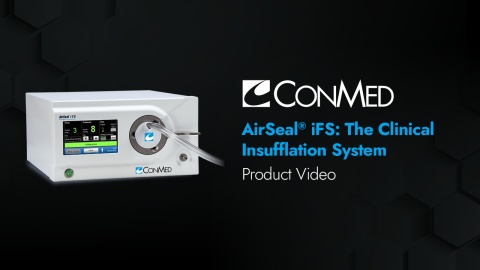





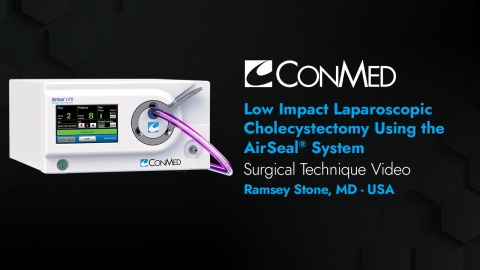
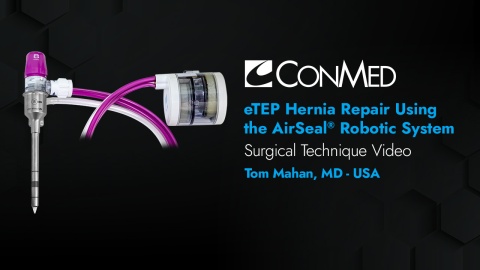
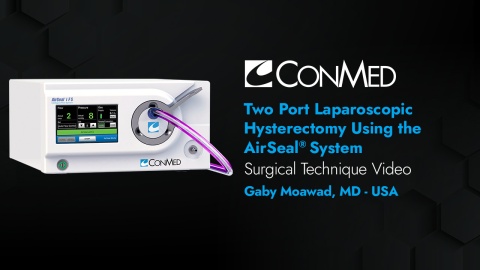
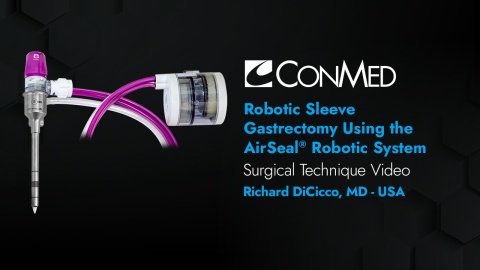
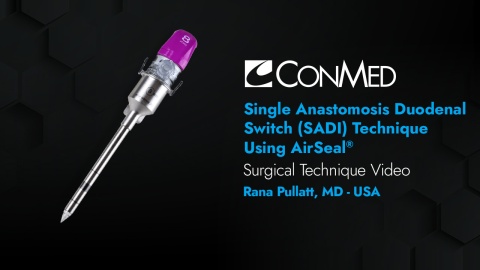
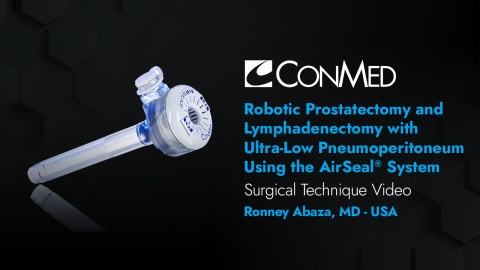
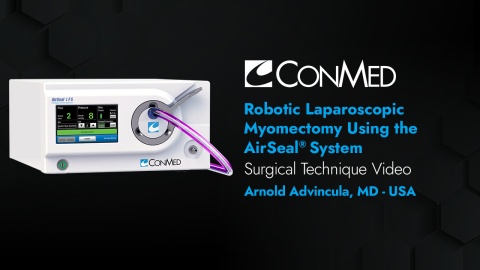
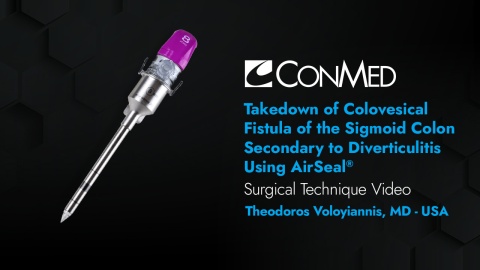
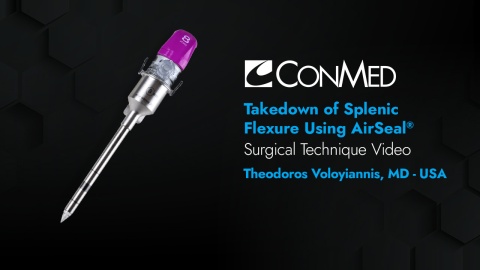



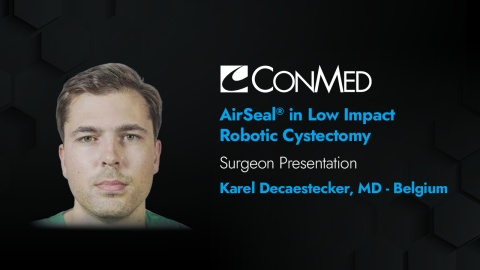



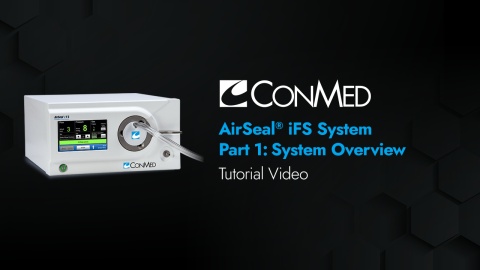
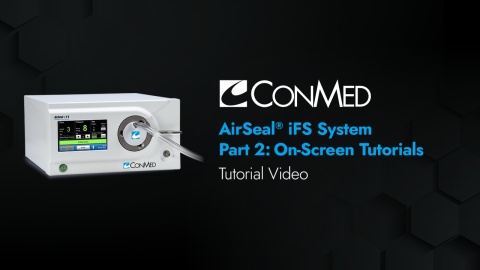
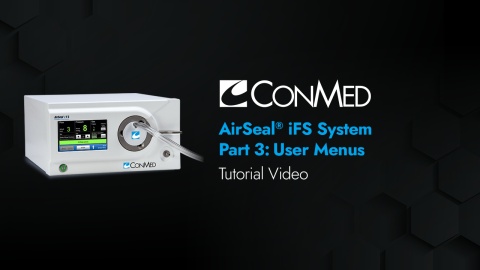
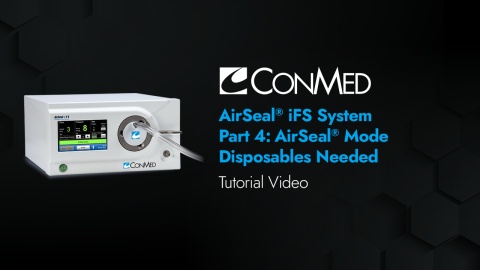
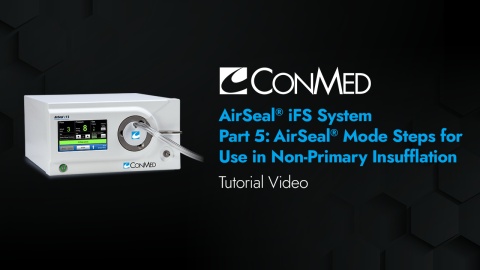
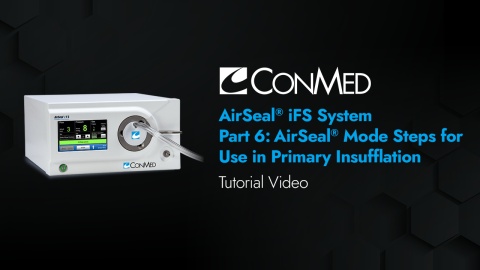
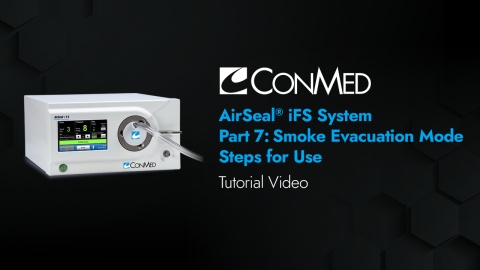
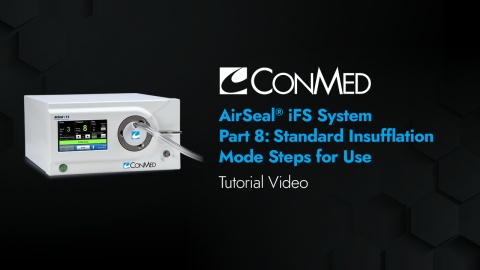
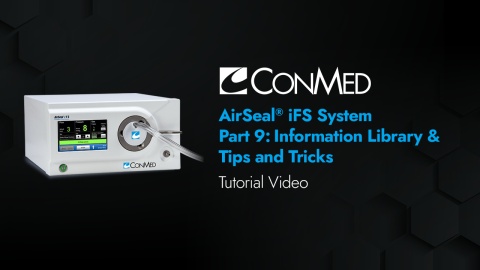
¿Listo para mejorar los resultados de tus pacientes?
Explora AirSeal® para tu práctica quirúrgica.
| CAT # | AS-IFS1 |
| Voltage | 120V |
| CAT # | IFS-WC1 |
| Note | USA/Domestic Use Only |
| CAT # | IFS-WC2 |
| Note | International Use Only |
| CAT # | IFS-BC1 |
| Note | Required Connector for Bottled Gas Use |
| Note | USA and International Use |
| AS-ICART | AS-ICART |
| Note | Cart with Bottle Rack, Holds Two “E” Size C02 Tanks |
| CAT # | AS-ICART-V |
| Note | Holds Two Two “E” Size C02 Tanks, and Switching Valve |
| CAT # | IAS5-100LP |
| Length | 100mm |
| Qty | 6/Box |
| CAT # | IAS5-120LP |
| Length | 120mm |
| Qty | 6/Box |
| CAT # | IASB5-150 |
| Length | 150mm |
| Note | (for use with single site surgical platforms) |
| Qty | 6/Box |
| CAT # | IAS8-100LP |
| Length | 100mm |
| Qty | 6/Box |
| CAT # | IAS8-120LP |
| Length | 120mm |
| Qty | 6/Box |
| CAT # | IASB12-100 |
| Length | 100mm |
| Qty | 6/Box |
| CAT # | IASB12-120 |
| Length | 120mm |
| Qty | 6/Box |
| CAT# | IAS12-150 |
| Length | 150mm |
| Qty | 6/Box |
| CAT # | IAS12-100LPI |
| Length | 100mm |
| Qty | 6/Box |
| CAT # | IAS12-120LPI |
| Length | 120mm |
| Qty | 6/Box |
| CAT # | ASM-EVAC1 |
| Qty | 6/box |
| CAT # | ASM-EVAC1-BI |
| Purchasing Unit of Measure | 6/Box |
* Based on internal sales data.
† Savings based on 2022 National Average of Kaiser Foundation Costs of Care in for-profit hospitals.
‡ Based on a 2025 market analysis
1 Saway JP, McCaul M, Mulekar MS, McMahon DP, Richards WO. Review of Outcomes of Low Verses Standard Pressure Pneumoperitoneum in Laparoscopic Surgery. Am Surg. 2022;88(8):1832-1837. doi:10.1177/00031348221084956
2 Abaza R, Ferroni MC. Randomized Trial of Ultralow vs Standard Pneumoperitoneum during Robotic Prostatectomy. J Urol. 2022;208(3):626-632. doi:10.1097/JU.0000000000002729
3 Covotta M, Claroni C, Torregiani G, et al. A Prospective, Randomized, Clinical Trial on the Effects of a Valveless Trocar on Respiratory Mechanics During Robotic Radical Cystectomy: A Pilot Study. Anesth Analg. 2017;124(6):1794-1801. doi:10.1213/ANE.0000000000002027.
4 Desroches B, Porter J, Bhayani S, Figenshau R, Liu PY, Stifelman M. Comparison of the Safety and Efficacy of Valveless and Standard Insufflation During Robotic Partial Nephrectomy: A Prospective, Randomized, Multi-institutional Trial. Urology. 2021;153:185-191. doi:10.1016/j.urology.2021.01.047
5 Bucur P, Hofmann M, Menhadji A, et al. Comparison of Pneumoperitoneum Stability Between a Valveless Trocar System and Conventional Insufflation: A Prospective Randomized Trial. Urology. 2016;94:274-280. doi:10.1016/j.urology.2016.04.022
6 Razdan S, Ucpinar B, Okhawere KE, Badani KK. The Role of AirSeal in Robotic Urologic Surgery: A Systematic Review. J Laparoendosc Adv Surg Tech. 2023;33(1). doi:10.1089/lap.2022.0153
7 Wei M, Yang W, Zhou J, et al. Comparison of AirSeal versus conventional insufflation system for retroperitoneal robot-assisted laparoscopic partial nephrectomy: a randomized controlled trial. World J Urol. 2024;42(1):90. Published 2024 Feb 21. doi:10.1007/s00345-024-04819-3
8 Faizan M, Shariq K, Abbas FS, Murtaza DA, Naveed A, Tarar HM, Fahim R, Kumar S, Siddiqui SA. A comparison of CO2-related complications in partial nephrectomies between the AirSeal system and conventional system: a systematic review and meta-analysis. J Robot Surg. 2025;19:104. doi:10.1007/s11701-025-02227-2
9 Sroussi J, Elies A, Rigouzzo A, et al. Low pressure gynecological laparoscopy (7mmHg) with AirSeal® System versus a standard insufflation (15mmHg): A pilot study in 60 patients. J Gynecol Obstet Hum Reprod. 2017;46(2):155-158. doi:10.1016/j.jogoh.2016.09.003
10 Buda A, Di Martino G, Borghese M, et al. Low-Pressure Laparoscopy Using the AirSeal System versus Standard Insufflation in Early-Stage Endometrial Cancer: A Multicenter, Retrospective Study (ARIEL Study). Healthcare (Basel). 2022;10(3):531. Published 2022 Mar 14. doi:10.3390/healthcare10030531
11 Hamid, M., Zaman, S., Mostafa, O.E.S. et al. Low vs. conventional intra-abdominal pressure in laparoscopic colorectal surgery: a prospective cohort study. Langenbecks Arch Surg 410, 12 (2024). https://doi.org/10.1007/s00423-024-03579-3
12 Foley CE, Ryan E, Huang JQ. Less is more: clinical impact of decreasing pneumoperitoneum pressures during robotic surgery. J Robot Surg. 2021;15(2):299-307. doi:10.1007/s11701-020-01104-4
13 Abaza R, Martinez O, Ferroni MC, Bsatee A, Gerhard RS. Same Day Discharge after Robotic Radical Prostatectomy. J Urol. 2019;202(5):959-963. doi:10.1097/JU.0000000000000353
14 Celarier S, Monziols S, Célérier B, et al. Low-pressure versus standard pressure laparoscopic colorectal surgery (PAROS trial): a phase III randomized controlled trial. Br J Surg. 2021;108(8):998-1005. doi:10.1093/bjs/znab069
15 Ferroni MC, Abaza R. Feasibility of robot-assisted prostatectomy performed at ultra-low pneumoperitoneum pressure of 6 mmHg and comparison of clinical outcomes vs standard pressure of 15 mmHg. BJU Int. 2019;124(2):308-313. doi:10.1111/bju.14682
16 Ramshaw B, Forman B, Heidel E, Dean J, Gamenthaler A, Fabian M. A Clinical Quality Improvement (CQI) Project to Improve Pain After Laparoscopic Ventral Hernia Repair. Surg Technol Int. 2016;29:125-130.
17 Ramshaw B, Vetrano V, Jagadish M, Forman B, Heidel E, Mancini M. Laparoscopic approach for the treatment of chronic groin pain after inguinal hernia repair : Laparoscopic approach for inguinodynia. Surg Endosc. 2017;31(12):5267-5274. doi:10.1007/s00464-017-5600-3
18 Feng TS, Heulitt G, Islam A, Porter JR. Comparison of valve-less and standard insufflation on pneumoperitoneum-related complications in robotic partial nephrectomy: a prospective randomized trial. J Robot Surg. 2021;15(3):381-388. doi:10.1007/s11701-020- 01117-z 2.
19 Grieco, M., Tirelli, F., Agnes, A., Santocchi, P., Biondi, A., & Persiani, R. (2021). High-pressure CO2 insufflation is a risk factor for postoperative ileus in patients undergoing TaTME. Updates in surgery, 73(6), 2181–2187. https://doi.org/10.1007/s13304-021-01043-1
20 Rohloff M, Cicic A, Christensen C, Maatman TK, Lindberg J, Maatman TJ. Reduction in postoperative ileus rates utilizing lower pressure pneumoperitoneum in robotic-assisted radical prostatectomy. J Robot Surg. 2019;13(5):671-674. doi:10.1007/s11701-018-00915-w
21 Kikhia, R. M., Price, K., Alli, V., Pryor, A., Gracia, G., Rubano, J., Schnur, J., & Telem, D. (2017). Prospective evaluation of low insufflation pressure cholecystectomy using an insufflation management system versus standard CO2 pneumoperitoneum. SAGES Annual Meeting Abstracts Archive.
22 Ayoub CH, Armache AK, El-Asmar JM, et al. The impact of AirSeal® on complications and pain management during robotic-assisted radical prostatectomy: a single-tertiary center study. World J Urol. 2023;41(10):2685-2692. doi:10.1007/s00345-023-04573-y
23 Zhi W, Wang Y, Wang L, Yang L. Comparative assessment of safety and efficacy between the AirSeal system and conventional insufflation system in robot-assisted laparoscopic radical prostatectomy: a systematic review and meta-analysis. J Robot Surg. 2024;18(1):291. Published 2024 Jul 23. doi:10.1007/s11701-024-02000-x
24 Vasdev N, Martin N, Hackney AB, Piedad J, Hampson A, Shan G-M, et al. Comparing different pneumoperitoneum (12 vs. 15 mmHg) pressures with cytokine analysis to evaluate clinical outcomes in patients undergoing robotic-assisted laparoscopic radical cystectomy and intracorporeal robotic urinary diversion. BJUI Compass. 2023; 4(5): 575–583. https://doi.org/10.1002/bco2.240
25 George, A. K., Wimhofer, R., Viola, K. V., Pernegger, M., Costamoling, W., Kavoussi, L. R., & Loidl, W. (2015). Utilization of a novel valveless trocar system during robotic-assisted laparoscopic prostatectomy. World journal of urology, 33(11), 1695–1699. https://doi.org/10.1007/s00345-015-1521-8
26 Fan, G., Chen, Y., Wang, J., Wu, Y., Wang, Y., Hu, K., & Tang, T. (2024). Perioperative outcomes and safety of valveless insufflation system in minimally invasive urological surgery: A systematic review and meta-analysis. Journal of Robotic Surgery, 18, Article 269. https://doi.org/10.1007/s11701-024-02023-4[1]
27 Yezdani, M., Yu, S.-J., Lee, A., Taylor, B., McGill, A., Monahan, K., & Lee, D. (2016). MP23-17 IMPROVED OUTCOMES DURING ROBOTIC PROSTATECTOMY UTILIZING AIRSEAL TECHNOLOGY. Journal of Urology, 195(4S), e268. https://doi.org/10.1016/j.juro.2016.02.739 (Original work published April 1, 2016)
28 Rydlewicz, J. A., Suzo, A. J., Mikami, D. J., & Needleman, B. J. (2025). Retrospective study of the AirSeal™ system for laparoscopic bariatric surgery. Journal of Minimally Invasive Surgery, 32(2), 123-130. The Ohio State University Wexner Medical Center. https://doi.org/10.1007/s00464-025-01234-5[1]
29 Annino, F., Topazio, L., Autieri, D., Verdacchi, T., De Angelis, M., & Asimakopoulos, A. D. (2017). Robotic partial nephrectomy performed with Airseal versus a standard CO2 pressure pneumoperitoneum insufflator: a prospective comparative study. Surgical endoscopy, 31(4), 1583–1590. https://doi.org/10.1007/s00464-016-5144-y
30 Boualaoui, I., Bey, E., De Villeneuve, M. H., Dergamoun, H., Droupy, S., & Wagner, L. Medico-Economic Impact of the AirSeal® Insufflator: Example of Laparoscopic Sacrocolpopexy. Clin Surg. 2021; 6, 3084.
31 de'Angelis, N., Abdalla, S., Carra, M. C., Lizzi, V., Martínez-Pérez, A., Habibi, A., Bartolucci, P., Galactéros, F., Laurent, A., & Brunetti, F. (2018). Low-impact laparoscopic cholecystectomy is associated with decreased postoperative morbidity in patients with sickle cell disease. Surgical endoscopy, 32(5), 2300–2311. https://doi.org/10.1007/s00464-017-5925-y
32 Forte, F., Tripodi, D., Pironi, D., Corongiu, E., Gagliardi, F., Frisenda, M., Gallo, G., Quarantiello, A., Di Lorenzo, G., Cavaleri, Y., Salciccia, S., Lori, E., & Sorrenti, S. (2023). Comparison of laparoscopic partial nephrectomy performed with AirSeal® system vs. standard insufflator: results from a referral center. Frontiers in surgery, 10, 1220332. https://doi.org/10.3389/fsurg.2023.1220332
33 Katoh, H., Ikeda, Y., Saito, Y. et al. The Usefulness of AirSeal™ Intelligent Flow System in Gas Insufflation Total Endoscopic Thyroidectomy. Indian J Otolaryngol Head Neck Surg 75, 115–120 (2023). https://doi.org/10.1007/s12070-022-03257-0
34 La Falce, S., Novara, G., Gandaglia, G., Umari, P., De Naeyer, G., D'Hondt, F., Beresian, J., Carette, R., Penicka, M., Mo, Y., Vandenbroucke, G., & Mottrie, A. (2017). Low Pressure Robot-assisted Radical Prostatectomy With the AirSeal System at OLV Hospital: Results From a Prospective Study. Clinical genitourinary cancer, 15(6), e1029–e1037. https://doi.org/10.1016/j.clgc.2017.05.027
35 Lu, Y., Zou, Q., Jiang, B., & Li, Q. (2024). Perioperative outcomes and safety of valveless insufflation system in minimally invasive urological surgery: a systematic review and meta-analysis. International journal of surgery (London, England), 110(9), 5763–5770. https://doi.org/10.1097/JS9.0000000000001634
36 Miyano, G., Morita, K., Kaneshiro, M., Miyake, H., Nouso, H., Yamoto, M., Koyama, M., Nakano, R., Tanaka, Y., Fukumoto, K., & Urushihara, N. (2015). Laparoscopic Toupet Fundoplication using an Air Seal Intelligent Flow System and Anchor Port in a 1.8-kg infant: A Technical Report. Asian journal of endoscopic surgery, 8(3), 357–360. https://doi.org/10.1111/ases.12182
37 Paull, J. O., Parsacandola, S. A., Graham, A., Hota, S., Pudalov, N., & Obias, V. (2021). The impact of the AirSeal® valve-less trocar system in robotic colorectal surgery: a single-surgeon retrospective review. Journal of robotic surgery, 15(1), 87–92. https://doi.org/10.1007/s11701-020-01071-w
38 Shahait, M., Cockrell, R., Yezdani, M., Yu, S. J., Lee, A., McWilliams, K., & Lee, D. I. (2019). Improved Outcomes Utilizing a Valveless-Trocar System during Robot-assisted Radical Prostatectomy (RARP). JSLS : Journal of the Society of Laparoendoscopic Surgeons, 23(1), e2018.00085. https://doi.org/10.4293/JSLS.2018.00085